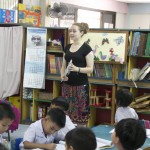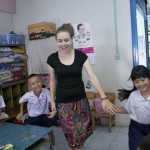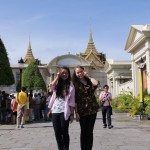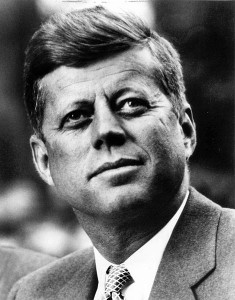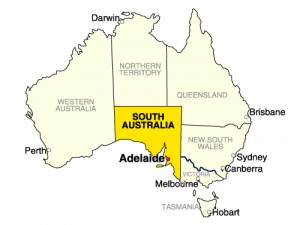 On October 10, I flew out from the Sydney International Airport, excited for the journey to Montreal, Canada. After a 22 hour flight I arrived in a warmer climate than expected for Montreal, with temperatures around 20 celsius. I was given the rest of the afternoon to settle in and to adjust. The next day I was taken on a tour of the city, as well as meeting my host Charlie’s friends. On Saturday, I was taken to Ottawa, the capital of Canada. I was given a tour of the city, where there were many amazing buildings, such as the parliament buildings. Sunday was Canadian Thanksgiving and we went to family friends for Thanksgiving dinner, where we had a roast turkey and pumpkin pie for dessert. It was a different experience, as I had never had pumpkin pie before but after trying it I could see why it was so popular!
On October 10, I flew out from the Sydney International Airport, excited for the journey to Montreal, Canada. After a 22 hour flight I arrived in a warmer climate than expected for Montreal, with temperatures around 20 celsius. I was given the rest of the afternoon to settle in and to adjust. The next day I was taken on a tour of the city, as well as meeting my host Charlie’s friends. On Saturday, I was taken to Ottawa, the capital of Canada. I was given a tour of the city, where there were many amazing buildings, such as the parliament buildings. Sunday was Canadian Thanksgiving and we went to family friends for Thanksgiving dinner, where we had a roast turkey and pumpkin pie for dessert. It was a different experience, as I had never had pumpkin pie before but after trying it I could see why it was so popular!
Tuesday came quickly and it was finally my first day at Lower Canada College! I was excited but also nervous at the same time. Everyone was so welcoming and helped me settle into school. I was lucky enough to be given the opportunity to play with the school’s football team, training with them Tuesday, Wednesday and Thursday night before the final game of the regular season that Friday. I was not able to get placed on the field as the team battled hard to keep their chances of making the playoffs alive. In the end however, they went down by 21 points. This meant the team missed out on playing in the post-season. Although I did not play any game time, being given the opportunity to train with the boys and learn more about how to play the game was a great opportunity.
Three weeks into my exchange Halloween had arrived, with the school having various activities set up – the favourite being pumpkin smashing! The school was full of students wearing different costumes, some being more inventive than others.
That weekend Charlie and his family took me to Toronto. We arrived on the Friday night and I could tell it was a huge city, with many high-rise buildings everywhere. On Saturday we walked around the city, seeing the newly opened aquatic centre, however the line was way too long, so we did not actually visit. We also went shopping at the Eaton Centre, which is near Yonge and Dundas Square, the Time Square of Toronto on a smaller scale. On Sunday before leaving for home, Charlie and I went up the CN Tower, the world’s tallest free standing structure at 553m. The viewing deck is 350 meters above the ground and gives you a great view of the size of the city.
A week later and we were off again, this time to New York for the weekend. Saturday morning we went to Hoboken, New Jersey to Carlo’s Bakery, made famous by the show ‘Cake Boss’ as per my request. Little did I know that the line to get into the bakery would be two hours long! We then headed for New York City to visit the World Trade Centre Memorial. Before going to Time Square, we went to Battery Park and saw a magnificent view of the sun setting behind the Statue of Liberty. We then arrived at Time Square. Everything about it was intimidating. It felt as though you were boxed in by all the surrounding buildings and you couldn’t move because of the amount of people that were there.
The next place we went to was the Rockefeller Centre, where the Christmas tree was in the process of being set up. We also went to the Apple store on Fifth Avenue which is just a glass cube with stairs leading down to the store. The next day we went to the Bronx Zoo where I enjoyed seeing all the different animals although many were not out as it was too cold.
The highlight of my exchange was going to watch an NHL ice hockey game at the Bell Centre. Charlie’s dad taught me all the different rules of the game. The Montreal Canadiens won the game 6-2 against the Minnesota Wild. The atmosphere at the game was electric with employees dancing in the aisles to entertain the crowd as the music blasted around the arena.
My exchange was quickly coming to an end as I said goodbye to all my Canadian friends before flying home on November 29. I soon touched back down in Adelaide after an amazing life experience that I will never forget.
I believe if anyone is lucky enough to have the opportunity to participate in an exchange they shouldn’t think twice about accepting because you will not regret it! – Brandon Blacksell, Grade 11 Exchange Student – Adelaide, Australia

![photo[5]](http://wearelcc.ca/wp-content/uploads/2013/11/photo5-300x200.jpg)
